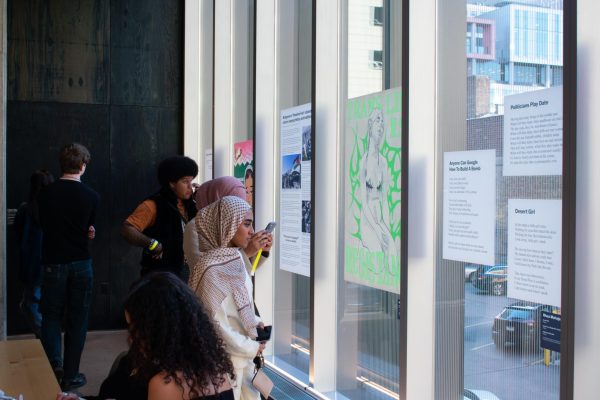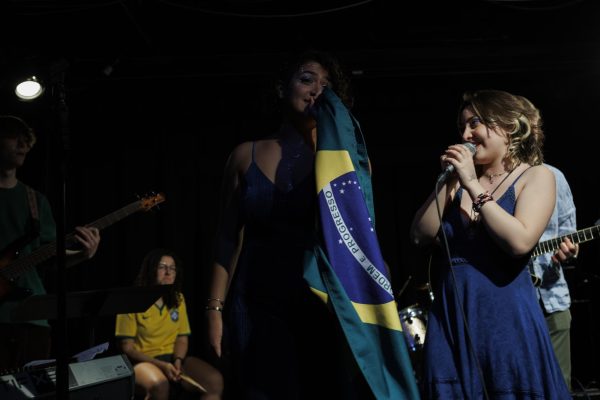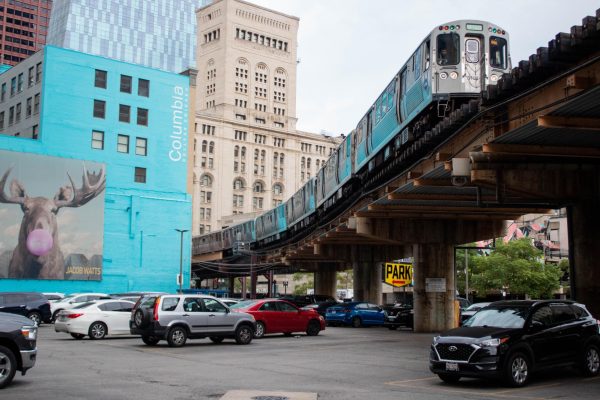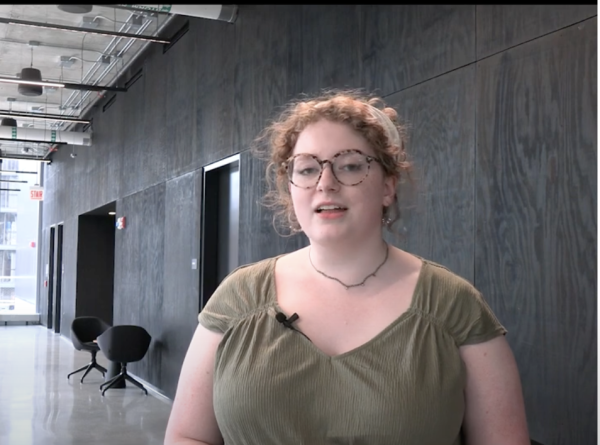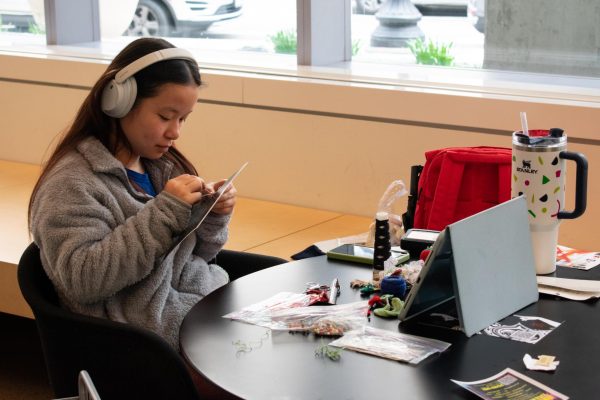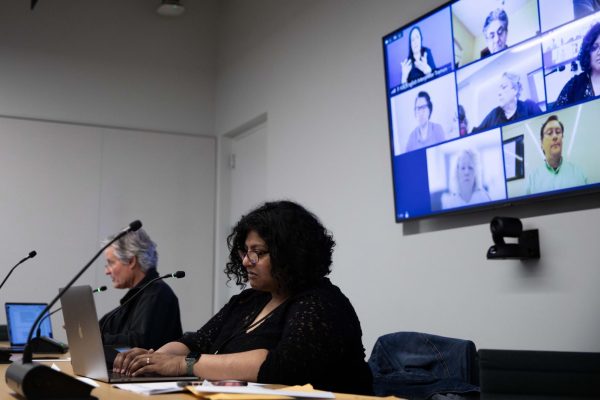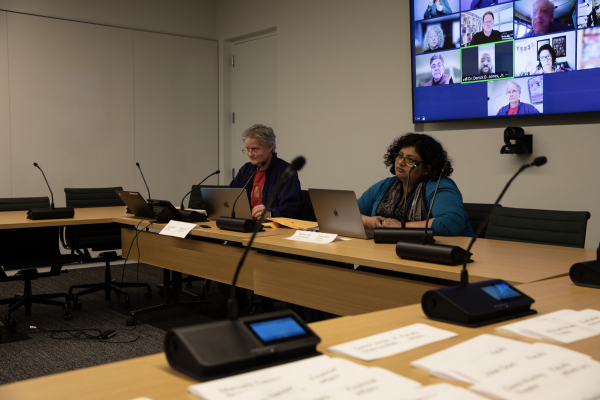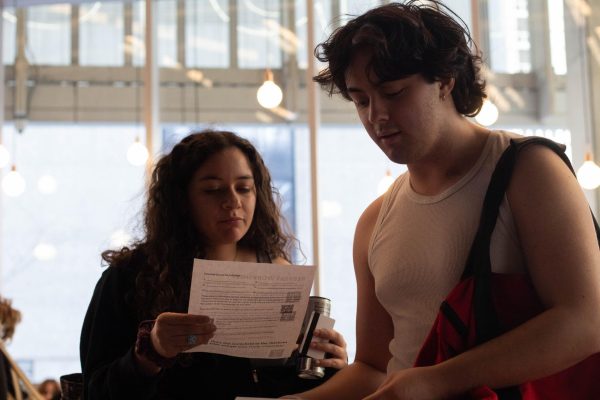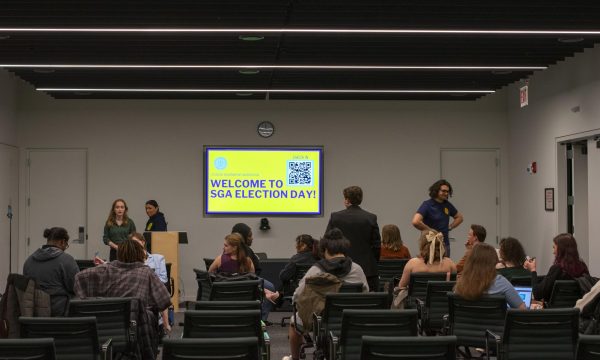‘Hidden secret’ showcases fashion history
February 16, 2009
Maria Pinto. Chanel. Dior. Perry Ellis. These items can be found at Saks Fifth Avenue or perhaps in the closet of a socialite, but also right on Columbia’s campus.
Located in the 618 Building, 618 S. Michigan Ave., the Fashion Columbia Study Collection contains some 6,000 items, including wedding dresses, jewelry, shoes, hats, undergarments, uniforms and clothing from around the world.
Relocated from the 1006 S. Michigan Ave. Building in summer 2008, it took a week to move the entire collection, said Steph McGrath, curator of the “curriculum-based” collection.
The new space includes separate rooms for the collection, library materials and a workroom for processing, cataloging and tagging individual items.
“It’s an incredible resource,” McGrath said. “I’m amazed. I haven’t even seen everything.”
The collection “grew out of our need for a teaching tool in the classroom,” said Dianne Erpenbach, director of fashion retail management, who co-founded the collection in 1989 with the help of Dennis Brozynski, coordinator of fashion design.
Erpenbach would bring in clothing to use as a visual aid while teaching, eventually donating her personal vintage collection of approximately 100 pieces to the school, primarily dresses dated from the late 1890s to the 1960s, which became the initial foundation of the study collection.
Organized by men’s, women’s and children’s clothes, the collection is further broken down by American, European and Japanese designers and organized by decade.
Ethnic clothing pieces, such as traditional ceremonial costumes, are also featured. Additionally, the collection houses books, catalogs, patterns and magazines dated from the 1800s to the present.
Viewable by appointment only, the collection is intended to serve as an inspiration and source of learning not only for fashion students in the design and merchandising fields, but for students studying other subjects such as creative writing, history, theater and anthropology.
A costume design class might visit the collection and sketch an outfit as an exercise, or a fiction writing class might create a character from an outfit, Erpenbach said.
“It’s great to have this collaboration throughout the college,” she said.
Despite the fact that the current domain in the 618 S. Michigan Ave. Building is more spacious, it is still limited in capacity, dictating that the collection can only accommodate “controlled growth,”McGrath said.
“The collection has to be refined, otherwise it can’t grow. We have to grow very carefully,” she said.
Though some items are purchased outright, a large part of the collection is acquired through private donations. A five-person acquisition committee looks for educational value, quality, sustainability, significance of design and provenance—the story behind the item—when deciding if a piece is worth adding to the collection, Erpenbach said.
While the bulk of the collection is made up of items dated post-1940, “we’re trying to get a good cross section of every era,” McGrath said. “Clothing’s a very important part of the culture. We’re very interested in provenance.”
The details of individual garments, such as the item’s date, provenance and a description—including fabric color, fiber content and construction information, noting the item’s neckline, collar type, waistline, sleeves, pockets, buttons and trim, among other things—are catalogued with an identification number so that it can be searched on the Fashion Columbia Study Collection website, which launched in 2002.
“We have those kinds of iconic artifacts that I think are outstanding,” Erpenbach said, noting a 1930 silk Madame Grès evening gown and several Jean Paul Gaultier pieces as important articles in the collection.
“I’d like to see their historical vintage items,” said Kirsten Knapton, a junior art and design major at Columbia, who visited the collection with a Fundamentals of Fashion Design class. “It would be useful to me just to see different construction techniques. Being a patternmaker or draping things, you have to think about technical aspects, like how do I hide a seam in a shoulder? How do I finish a hem? I would go again just to find out what I could learn from there.”
An emphasis is also placed on local designers such as Maria Pinto, Mark Shale and Mark Heister, who donated 428 items valued at $500,000 to the collection in October 2004.
“It’s important for students to see how Chicago has influenced design,” Erpenbach said. “We would like to acquire more Maria Pinto pieces.”
Thinking ahead for items she hopes to include in the collection that will be representative of 2000 and beyond, Erpenbach said this decade “will have to reflect denim.”
“It’s really been a force in our dress,” she said. “I’m not sure how we’re going to label this decade. We will try and find something that is indicative of the time.”
Visit the Fashion Columbia Study Collection online at fashioncollection.colum.edu.





